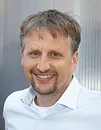BrightQuanDTUM
Project: Bright and Positioned Quantum Light Sources at Room Temperature
Collaborating departments: Chair of Nanotechnology and Nanomaterials - Walter-Schottky-Institut and Physics Department (TUM); Department of Photonics Engineering (DTU)
Solid-state based quantum light sources that emit single photons with high purity, rate, and ideally up to room temperature are of central importance for emerging quantum technologies, such as quantum cryptography or quantum information processing. Atomic defects in layered van der Waals materials constitute an emerging and promising platform for such room temperature solid-state single photon emitters, with potential advantages over traditional materials systems based, for example, on quantum dots grown in bulk semiconductors. Yet, several challenges regarding nanoscale positioning of the optically active defect sites in the van der Waals material, control over coupling of the emitters to acoustic phonons, and a fundamental understanding of their level structure need to be addressed.
BrightQuanDTUM has the vision to develop single photon emitters in van der Waals materials, and most prominently in hexagonal boron nitride, which is an ideally suited wide-gap semiconductor, towards an integrated platform for bright and pure solid-state single photon emitters by engineering defect creation, engineering mechanical strain, understanding the fundamental level structure, integrating the single photon emitters into high quality photonic structures, and controlling the coupling between emitters and to acoustic/optical phonons. To this end, the project combines the complementary expertise in defect engineering of van der Waals materials (TUM) and photonic engineering (DTU) to provide bright and positioned quantum light sources for room applications.
M. Fischer, A. Sajid, J. Iles-Smith, A. Hötger, D. I Miakota, M. K Svendsen, CK, S. Canulescu, S. Xiao, M. Wubs, K. S. Thygesen, A. W. Holleitner, N. Stenger, Combining experiments on luminescent centres in hexagonal boron nitride with the polaron model and ab initio methods towards the identification of their microscopic origin. Nanoscale 2023, 15, 14215-14226.
Team

Coordinating Postdoc
Dr. Christoph Kastl
Center for Nanotechnology and Nanomaterials
Walter Schottky Institute | TUM
Doctoral Candidate
Leonard Geilen
Center for Nanotechnology and Nanomaterials
Walter Schottky Institute | TUM
Doctoral Candidate

Principal Investigator
Professor Dr. Alexander Holleitner
Chair of Nanotechnology and Nanomaterials Physics Department | TUM

Principal Investigator
Professor Nicolas Leitherer-Stenger
Department of ElectrIcal and Photonics Engineering | DTU